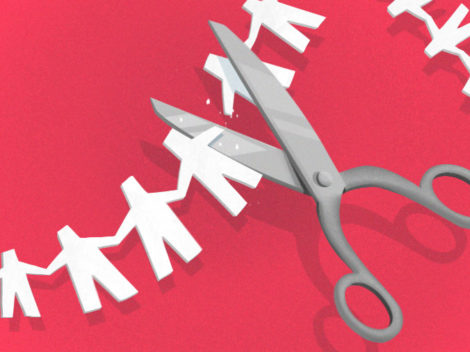Tech is taking note of seniors, a group of potential users often dismissed by the industry. And for any of us who have been called to help an older relative with technology, the stereotypes concerning an elder’s use of technology are familiar.
Follow Crunchbase News on Twitter
But while aging adults aren’t the target of Silicon Valley’s latest dating or service apps, trends suggest that aging Americans are on board with their younger counterparts. And there’s tech being built that caters to them.
Growing Old And Profitable
The senior tech market isn’t small. According to a 2014 survey by the Pew Research Center, more than half of Americans over the age of 65 use the internet. However, the learning curve isn’t smooth for this demographic.
“Older adults face some unique challenges that other groups don’t face, and that they do face unique barriers to increase adoption,” Smith, author of the Pew survey, told Crunchbase News. “At the same time, once they’re able to overcome those challenges, we really see them being more receptive to it.”
USC professor Maryalice Jordan-Marsh of the School of Social Work’s Department of Adults and Healthy Aging—who has worked with a team to develop virtual learning games for older adults and the disabled—agrees. “Part of the dilemma is that some of them try to take a small step and get drowned in it, so it’s scary.”
The rapidly-growing population of aging tech users has helped launch a wave of software startups catering specifically to this group’s needs. San Francisco-based companies like Honor and Renew have created platforms aimed to solve the often daunting problems of aging with success.
Honor Founder and CEO Seth Sternberg told us that investors are realizing just how much potential this market holds. The startup, which provides custom home care through skilled caregivers, recently closed a Series C round. It has raised a total of $115 million in funding in just four years.
This makes the company an outlier. Startups aimed at the 65-plus users only attracted about 0.7 percent of venture capital, Sternberg explained. He also admitted Honor “found some obstacles” when funding its Series A back in 2014.
This is a testament to the market’s rapid growth in its early days, Kevin Nazemi, CEO of Renew, told Crunchbase News. It’s also a shift away from the typical products the industry’s young, healthy entrepreneurs churn out. For example, the idea for Renew came from his own parents’ frustration with planning for retirement. The task is often bogged down in bureaucratic, antiquated systems, and Nazemi knew an answer to the convolution was building an intuitive software platform to help the aging users navigate this space.
“This is [the] first generation in history to be comfortable using digital trends, as minor as using emojis or as major as work laptops,” he said. “There is an immense opportunity in serving the older population, with the biggest being in the ‘pain-relieving’ model.”
As more boomers age in the next decade or so, Nazemi believes even more investors and founders will take notice of this space, helping bring it to the forefront of the Valley’s focus. For context, the number of people over age 65 is projected to go from 43 million to 85 million in the next 20 years, and they’ll need more than antiquated Facebook accounts to see them through their “sunset years.”
Elsewhere, Navy Design—a health technology company based in Melbourne, Australia—is looking to bridge these tech gaps for older adults, among other neglected groups. Ollie Campbell, a Navy designer who specializes in the psychology behind the products, told Crunchbase News that marginalized groups such as the elderly and disabled are typically a second thought because youth-obsessed Silicon Valley is dominated by young founders. And with hip entrepreneurs, the desire to constantly create fresh, cool products means older users aren’t always the first market on their mind.
However, Campbell believes there is value in addressing the elderly’s needs, even if it means a bigger investment in the product.
“It isn’t always easy or cheap,” Campbell said. “We’ve designed an e-commerce site to make it [more] accessible, and for some features that meant it took 70 percent more time to build things. That’s a pretty big tax to pay to make something work for a relatively small fraction of your audience. Not everyone can afford to pay for that.”
But involving older adults is the key to catching them up with the future. The more the tech industry pays attention to aging folks and their needs, the closer we’ll get to providing the often-neglected group comfort and knowledge.

Stay up to date with recent funding rounds, acquisitions, and more with the Crunchbase Daily.






![Illustration of a guy watering plants with a blocked hose - Global [Dom Guzman]](https://news.crunchbase.com/wp-content/uploads/quarterly-global-3-300x168.jpg)
67.1K Followers